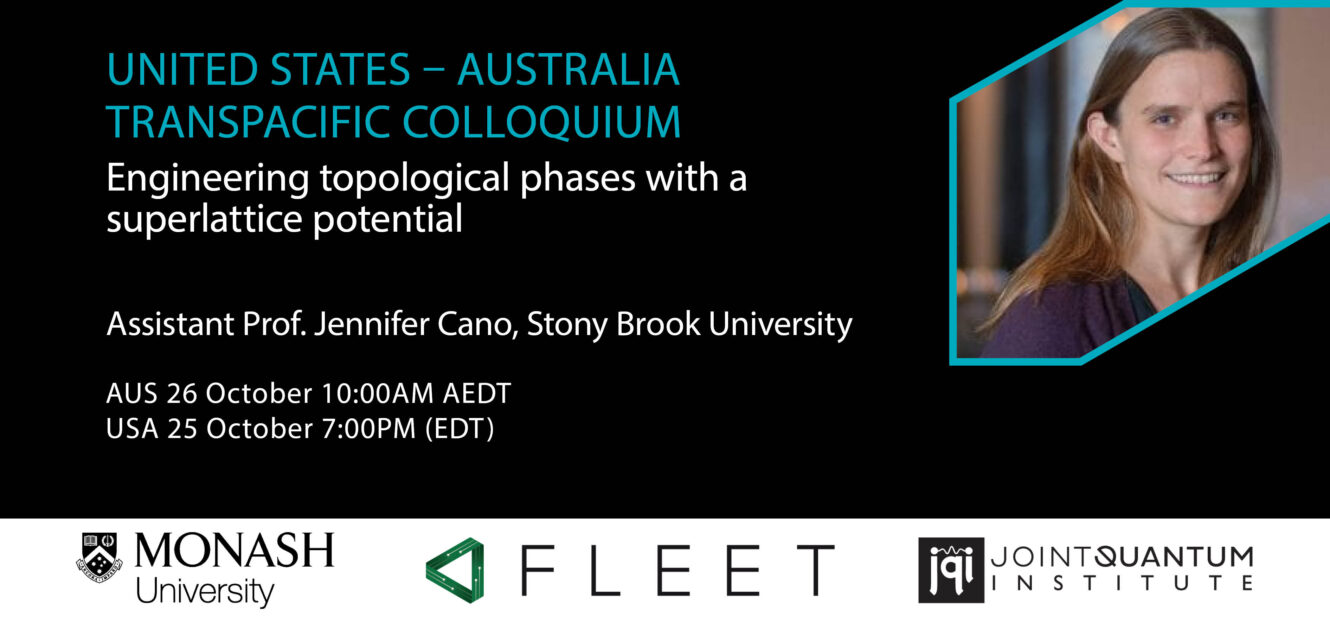-
26 Oct 2022
10:00 am - 11:00 pm
Assistant Professor, Jennifer Cano. Department of Physics and Astronomy, Stony Brook University, Flatiron Institute
Missed the presentation? Catch up on FLEET’s YouTube Channel here
Spontaneous symmetry breaking on the surface of a topological insulator can realize exotic quantum phases such as a quantum anomalous Hall insulator or topological superconductor. However, in all known 3D topological insulators, the Coulomb interaction is too weak to open a gap.
We propose a new route to manipulate topological surface states by an artificial superlattice potential. The superlattice potential creates tunable van Hove singularities, which, when combined with strong spin-orbit coupling and Coulomb repulsion give rise to a topological meron lattice spin texture. The periodicity of this designer meron lattice can be tuned by varying the periodicity of the potential. We then show that a superlattice potential applied to Bernal-stacked bilayer graphene can also create topological flat bands, similar to twisted bilayer graphene. The superlattice potential offers flexibility in both lattice size and geometry, making it a promising alternative to achieve designer flat bands without a moire heterostructure.
Jen’s research group at Stonybrook examines topological phases of matter. This can range from strongly correlated phases, such as the quantum Hall effect, to uncorrelated topological band structures. I am interested in classification, measurement, and materials discovery.
At the Flatiron Institute, Jennifer is involved in the Insitute’s mission to develop the concepts, theories, algorithms and codes needed to solve the quantum many-body problem and to use the solutions to predict the behavior of materials and molecules of scientific and technological interest.
This talk is part of an ongoing series of talks by US and Australian researchers presenting novel developments in condensed matter and cold atomic physics, enriching connections between the two physics communities. Co-presented by FLEET, Monash School of Physics and Astronomy, and the Joint Quantum Institute.

